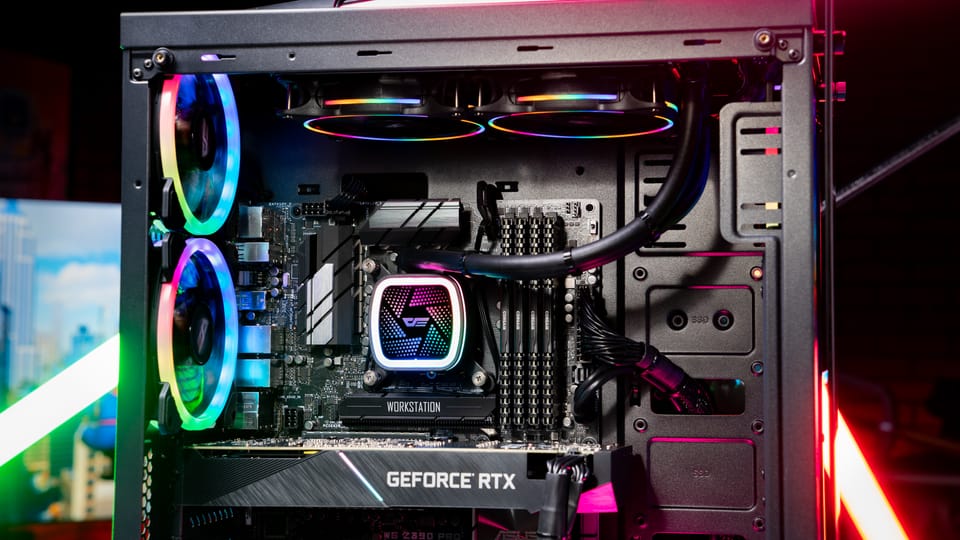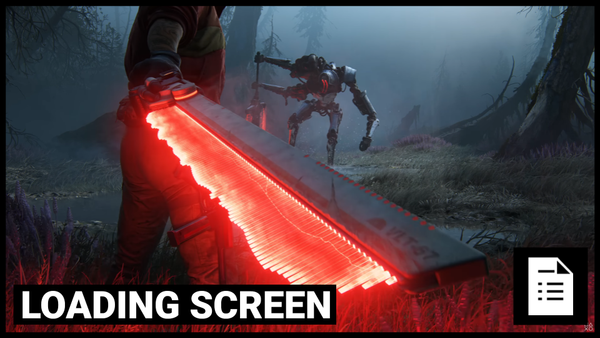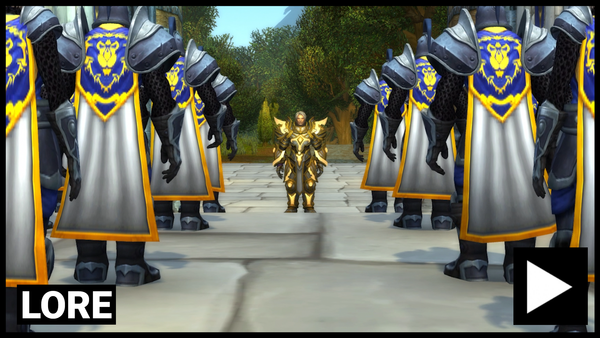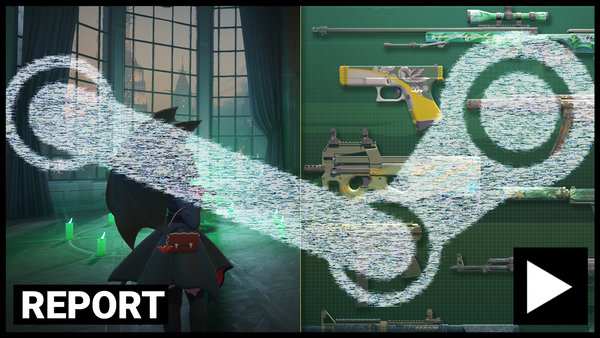The Hardware Wall
As PC Games Specifications Increase - audiences are concerned. We break down the concerns, and all the history, behind the PC race for more that’s leaving audiences behind.

- This week has thrown some PC gamers into disarray - as the recommended Specs for both Cities Skylines II and Alan Wake II have given engaged audiences pause.
- In both cases, to get a recommended grade performance, users were being asked to provide a 30 Series Card - cards which released in 2020 and still retail for upwards of $400.
- And if they wanted the best performance or ray tracing? They’d need a 40 Series Card, with the 4070 RRP at $600.
- Understandably, being told that you need to upgrade your PC in general to play the newest titles is frustrating.
- Paying more than a console for the best performance? Pain.
- Especially when the game is also coming out on those consoles that are weaker than the tech you have.
- But there’s some additional factors in play here.
- Alan Wake - for example is using a particular kind of Mesh Shader that simply isn’t supported by either 10 Series Nvidia cards or 5000 Series AMD cards.
- And so those cards simply won’t work with Remedy’s engine solution.
- It’s a hard limit on what can even access the game - a hardware cliff.
- And this is something we’re going to face more and more with requirements climbing rather than trying to bring along older cards to new games.
- So we need to talk about how all of this has been a long time coming, and it’s going to be mostly in broad strokes.
- There are legitimate problems here around how the relative cost of PC gaming upgrades has changed in a way that is at odds with the medium’s past.
- How all of this is predicated on an industry wide position that striving for better graphics and Next Gen Games is a requirement of entry.
- And how it’s partly the fault of console development supremacy for so long, and partly the fault of Nvidia themselves.
The Long Generational Divide and Nvidia’s Crypto Gouging
- The turn of the century changed how game development works.
- From the sixth generation to the eighth generation - a period of 1998 to 2020.

- Comparative improvement was broadly built around console architecture and structure - that was eventually not that far from a PC.
- Devs got better at building games for the 360 and PS4 - it’s why something at the end of the lifecycle absolutely looks better than the start.
- But as they’re still fundamentally working within the same constraints, an upper limit to what was possible graphically and technically.
- Moore’s Law limiting them until the next console comes out.
- Those constraints meant if you were developing for the most popular console, you could also (if you put the effort in) get a PC port alongside ports to other consoles.
- Some companies did this well
- Some did this poorly (Capcom we remember what you did)
- But in the broad strokes, when the 360 Era arrived, we reached a stable position in development.
- Ports were possible without building a whole new game like in previous generations.
- Performance could be broadly standardised in terms of expectations.
- PC Hardware prior to those generations would be quickly outclassed - yes.
- But when the hardware of a PC continues to improve at the base level over time, that means something even more when Console development is limited.
- Because the generational leap from PS2 to Xbox 360 to PS4 wasn’t that much better, it meant that your average PC build would last a long time.
- This from Digital Foundry’s Alexander Battaglia sums it up - PC Gamers got used to the idea that their cards would be able to survive for a long time for games built in this new environment.
I bought an x800xt in 2004 and in 2007 it could not play any UE3 game/almost all ps360 titles on PC (dx 9.0b). Just 3 years later. As Doc has said, the long xbox360 and - to a degree - the ps4 gen broke some pc gamer's minds about PC part longevity due to the consoles low perf. https://t.co/os7PL5tb0j
— Alexander Battaglia (@Dachsjaeger) October 24, 2023
- There was a broad belief that if you simply upgrade to the BEST card every other generation (around 4 years), you’ll be guaranteed the best possible performance till the next card generation - and then solid enough performance during that.
- In theory - this is all fine.
- Until we come to Nvidia’s position on Crypto as we left the 20 Series Cards and began to move into the 30 Series.
- Just as the PS5 and Xbox Series X came out, setting a new baseline
- Unfortunately, this followed the crypto boom.
- When it became functionally impossible to buy a graphics card at RRP
Average prices for the GTX 1060 have risen from $275 to $400 since May, according to PC Part Picker, while the 1070 has risen from $425 to $600. And again, these averages probably understate the rise, because if you actually want to get a card promptly you might be forced to pay an online reseller significantly more.
- This meant that both Nvidia and AMD learned a lesson from all this scalping.
- They could charge more for their cards - and people would pay for it if they were really dedicated to an upgrade.
- For those who weren’t - they waited. And hoped for a mid generation path to a cheaper card.
- Then the 40 Series came and that didn’t happen.
- Meaning a significant part of the PC audience is running cards that might have come out before 2020.
- Which is why in September 2023, the Steam Hardware Survey says that currently 28% of Steam has a 30 Series GPU, and only 6.5% of Steam has a 40 Series Card.
- Nvidia (in particular) realised they could command a higher price point - and then simply held their position there.
- And since people hadn’t been upgrading the way they would in the early oughts, then everything is kind of in stasis for players.
- Meanwhile for some devs and audiences- the march of progress hasn’t stopped
- This time, audiences are not, or haven’t been able to follow as closely.
- It’s at least partially due to the culture around PC gaming even in terms of media commentary - how high an FPS you can get, how large a rendering resolution, can the card get those natively without needing digital trickery - are some of the most important metrics.
- A culture of wanting the absolute best.
- This is something that’s always been present in PC gaming - and nothing makes that more clear than 2007.
PC Gaming In A Time of Crysis
- When a game turned up that memetically demanded more of almost all PCs available to even be playable.
- Can Your PC Run Crysis?
Most of us had the same traumatic experience. We installed Crysis adjusted the graphics settings to something that resembled reasonable expectations, and saw our PCs grind to a halt. It was pretty depressing to see the GeForce 8800GT fall flat on its face when it played all other games so easily. Even the mighty 8800GTX couldn't handle the game at max settings and even struggled at 1,280 x 1,024.
I was prepared to throw some serious cash at my PC to enable it to play Crysis at max settings on my 20in monitor. Who wasn't? Like FarCry, Battlefield 2, and several games before it, I had a burning desire to upgrade to get some decent frame rates and luscious visuals.
But, no matter where I looked, graphics card reviews and forum threads all showed the same story. Crysis was an untameable beast with current hardware and even several 8800GTXs in SLI struggled in the early days of the technology with minimum frame rates regularly dipping to unsavoury figures.
- At the time - it wasn’t just a meme, Crysis was genuinely unachievable for even higher end machines.
- And for segments of the press at the time - that wasn’t a problem for PC Gaming, it was a feature.
- Striving for more was part of PC Gaming culture.


- The RRP for that top end card that struggled - the 8800GTX was $599 in 2006 (though it retailed at around $50 more)
- Taking inflation into account, that same card would retail in 2023 for $915
- Comparing it to the 4090 as a generational equivalent, there’s a $600 disparity.
- PC gaming was always expensive - but the long generations described above gave rise to the idea that you could future proof your PC.
- Upgrading in a modular fashion over time as new challenges arose if you invested something like $1000 to $1500 into a good PC at time of buying.
- That’s not the case any more.
- And this is the important context that these new recommended requirements are coming into.
- Even before considering exterior economic factors - having a PC that can run these games is expensive and prohibitive.
No But Can Your PC run these Games?
- So we thought we’d actually go check how big the potential audience was for these games.
- The Steam Hardware Survey runs every month - and gives a representative view of the state of PC Hardware on the biggest PC platform.
- It’s not perfect, but it gives us a ballpark to play in, especially with Graphics Card tracking - which is usually the biggest pain point for gamers.
- So we ran the numbers and came back with some key findings.
- We checked the Minimum Specs for Alan Wake II, comparing like for like and discounting anything earlier than a 20 series or 6000 series card.
- 43% of Steam Users have a GPU that can run Alan Wake 2 and should get 1080/30.
- Then we checked the Recommended Specs for Alan Wake II (both 1440/30 or 1080/60)
- 32% of Steam Users have a GPU that can run Alan Wake 2 and will get those recommended settings or better.
- That’s under 50% of the whole Steam Audience - but that’s not a bad set of numbers proportionally.
- Those are folks who will be able to run this game.
- They’re just not going to reach 4k resolution.
- And they’re not going to end up with 120FPS.
- And they will have to do so with additional tech as a baseline like DLSS.
- Which is a problem for people who specifically bought these 30 Series or 40 Series cards so they didn’t have to worry about performance and wanted the best possible situation.
- To them, the idea that they are being told their cards are now entry level?
- Unbelievable.

- And this is where the cultural perception of PC Gaming - The mindset that the “PC Master Race” came out of - is grinding up against reality.
- A very sizeable contingent of PC Gamers are going to be running machines that can run this game, yes.
- But they are not the majority.
- And machines capable of this top tier performance aren’t the majority of the PC audience.
- Alan Wake 2’s settings are a technical wall for that majority by default.
- They won’t be able to play on PC.
- For the minority who have invested all that (significantly inflated) spend into the top tier cards, this is like having the rug pulled.
- Especially when they can look at consoles and see that somehow the game is being made to run on them as well - so how can they not do it with better tech?
- As Battaglia points out - the Consoles aren’t really a comparison.
Consoles are not magic, and *nearly* every time there is this kind of negative discourse about PC, there is a unspoken idea that consoles are running ultra or something. They are almost never running ultra. RDR2 ran at a weird mix of low and lower than low on X1X to hit 4K.
— Alexander Battaglia (@Dachsjaeger) October 25, 2023
- There’s a genuine reason for these top tier games existing - pushing the medium forward graphically is something so deeply ingrained in the culture of making and playing games.
- It is a delight when something acts as a visual showcase for what games can be.
- Especially with this being one of the first prestigious Epic Publishing games - they partnered with Remedy specifically because they can push the boat out on graphics.
- Remedy in particular will have made a decision that their technical requirements are worth all this - and that the Console versions will give people an access point affordably for their games.
- They are not inherently wrong to want to do this.
- But the context with which the industry continues to push graphical fidelity and improvement is directly at odds with the ability of the majority of the audience to follow down an expensive path.
- And that’s a tension that’s not going to ease any time soon.





